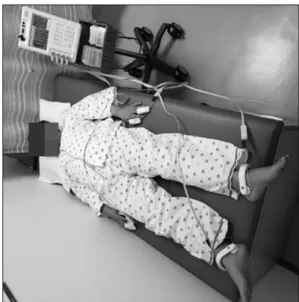https://doi.org/10.35827/cp.2020.19.1.23
접수일 : 2019 년 9 월 6 일 , 게재승인일 : 2019 년 10 월 2 일 책임저자 : 김우진 , Department of Rehabilitation, Epworth Rehabili-
tation, Epworth Healthcare, 50 Burwood Road, Hawthorn, VIC 3122, Australia
Tel: 61-3-9415-5760, Fax: 61-3-9415-5607 E-mail: cyctaz@hanmail.net
뇌졸중 후 복합부위통증증후군에서 부위별 위상각을 이용한 평가
인제대학교 해운대 백병원 재활의학교실
1, 호주 엡워스 병원 재활의학과
2박세흠1ㆍ김우진2ㆍ조근열1ㆍ권준구1
Application of Segmental Phase Angle for Assessment of Post-Stroke Complex Regional Pain Syndrome
Se-Heum Park, M.D.
1, Woo-Jin Kim, M.D., Ph.D.
2, Geun-Yeol Jo, M.D., Ph.D.
1and Jun-Koo Kwon, M.D.
11
Department of Rehabilitation Medicine, Inje University Haeundae Paik Hospital, Busan, Korea,
2

